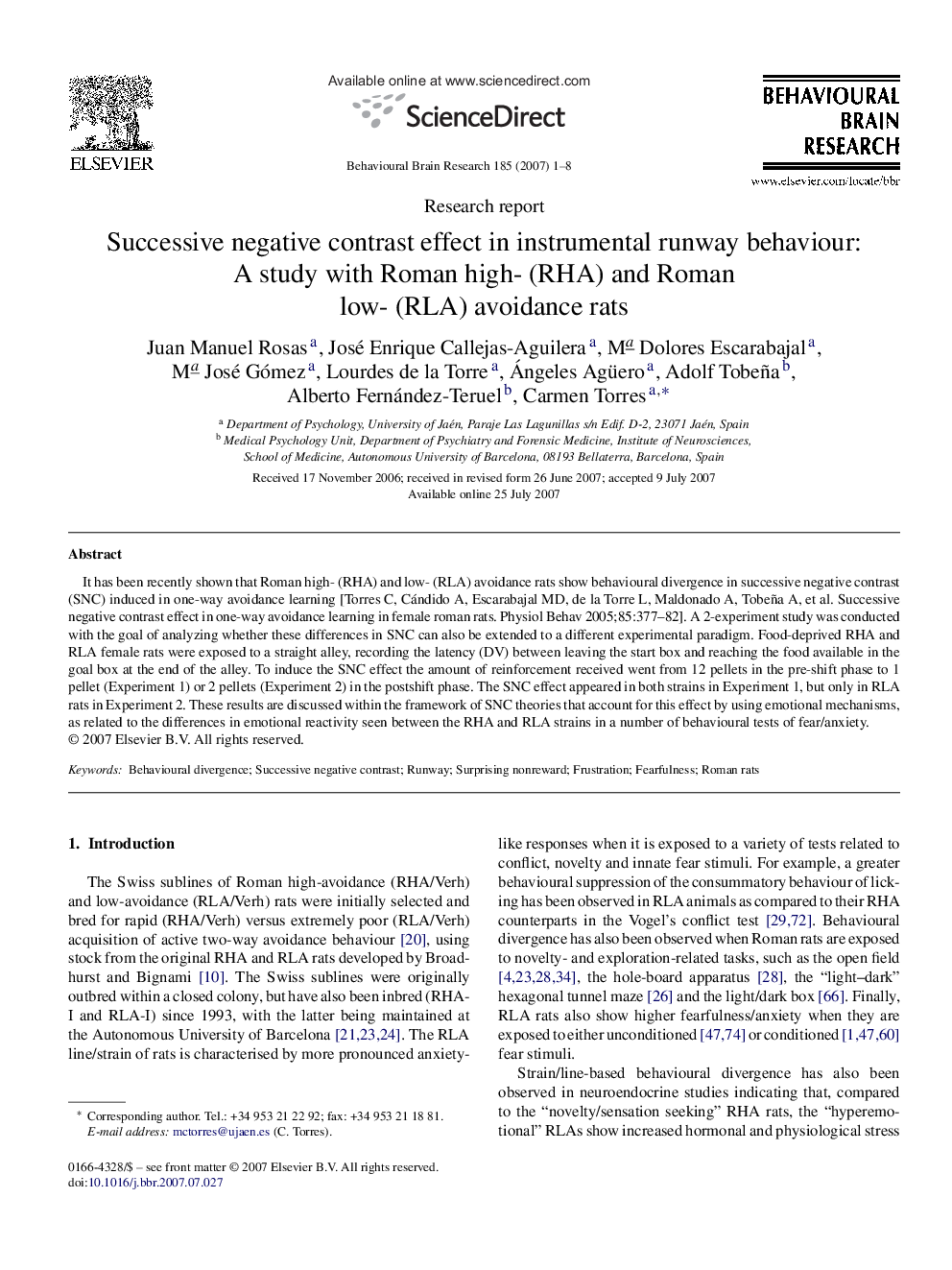| Article ID | Journal | Published Year | Pages | File Type |
|---|---|---|---|---|
| 4315416 | Behavioural Brain Research | 2007 | 8 Pages |
It has been recently shown that Roman high- (RHA) and low- (RLA) avoidance rats show behavioural divergence in successive negative contrast (SNC) induced in one-way avoidance learning [Torres C, Cándido A, Escarabajal MD, de la Torre L, Maldonado A, Tobeña A, et al. Successive negative contrast effect in one-way avoidance learning in female roman rats. Physiol Behav 2005;85:377–82]. A 2-experiment study was conducted with the goal of analyzing whether these differences in SNC can also be extended to a different experimental paradigm. Food-deprived RHA and RLA female rats were exposed to a straight alley, recording the latency (DV) between leaving the start box and reaching the food available in the goal box at the end of the alley. To induce the SNC effect the amount of reinforcement received went from 12 pellets in the pre-shift phase to 1 pellet (Experiment 1) or 2 pellets (Experiment 2) in the postshift phase. The SNC effect appeared in both strains in Experiment 1, but only in RLA rats in Experiment 2. These results are discussed within the framework of SNC theories that account for this effect by using emotional mechanisms, as related to the differences in emotional reactivity seen between the RHA and RLA strains in a number of behavioural tests of fear/anxiety.
